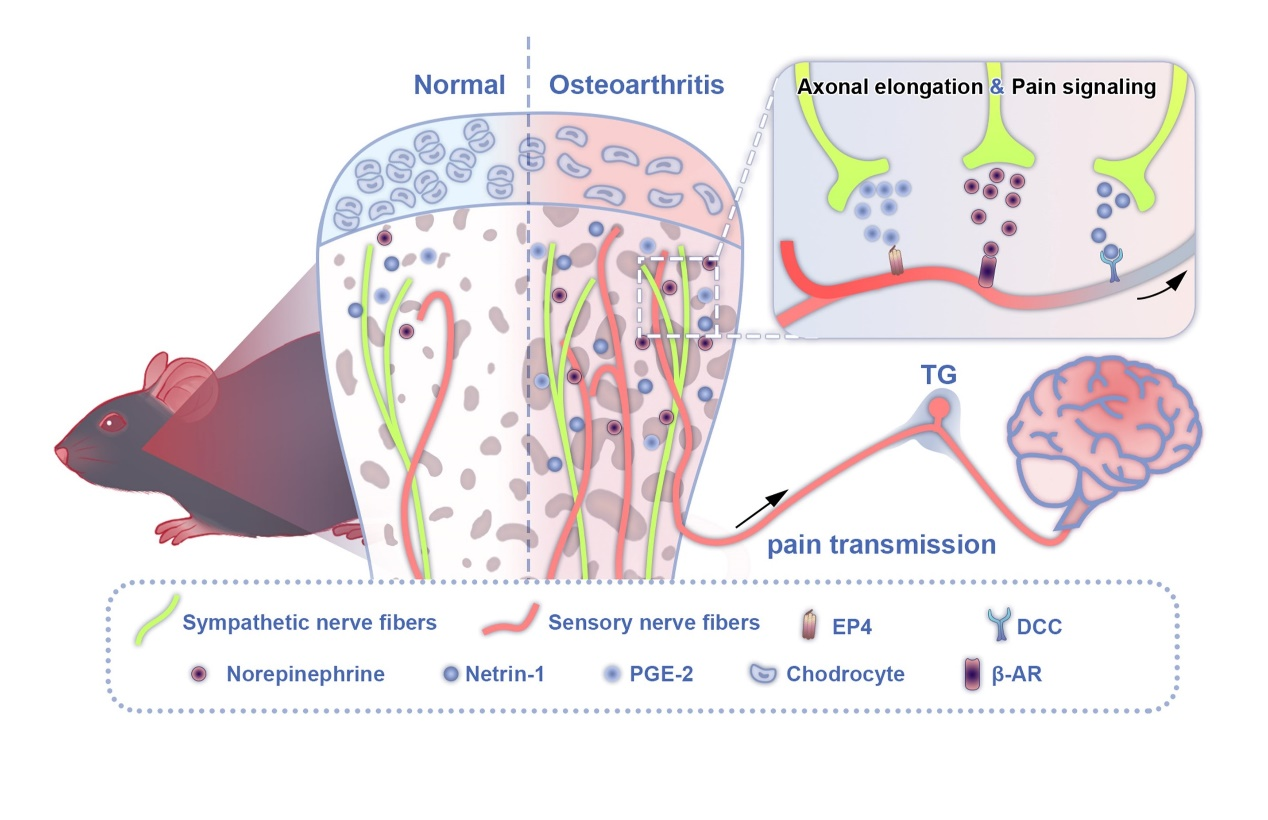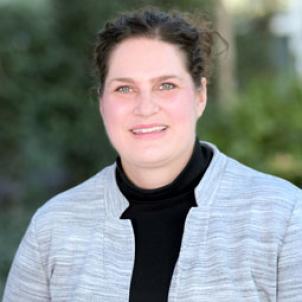Being optimistic about the future may help people save more money, and the effect appears strongest among those with lower incomes, according to research published by the American Psychological Association.
Category: Research Results
Walk like a … gecko? Animal footpads inspire a polymer that sticks to ice
Researchers in ACS Applied Materials & Interfaces report using silicone rubber enhanced with zirconia nanoparticles to create a gecko-inspired slip-resistant polymer. They say the material, which sticks to ice, could be incorporated into shoe soles to reduce injuries in humans.

New evidence suggests the temporomandibular joint is a neurogenic joint: Sympathetic-sensory interaction promotes pain in temporomandibular joint osteoarthritis via bone sensing mechanisms
The temporomandibular joint (TMJ) develops from neural crest cells which originate from the neuroectoderm. Based on the scientific hypothesis that the TMJ, as a “neurogenic joint,” is more susceptible to peripheral nerve regulation and innervation.
Energy-efficient cooling thanks to ionic wind
Thanks to a new type of airflow booster for ionic wind, completely new fields of application are opening up for the start-up Ionic Wind Technologies. In future, the patented technology is to be used primarily for cooling data centers and high-performance electronics. The Empa spin-off has already won several awards.
Sharks and rays benefit from global warming – but not from CO2 in the Oceans
Sharks and rays have populated the world’s oceans for around 450 million years, but more than a third of the species living today are severely threatened by overfishing and the loss of their habitat. An international research team led by palaeobiologist Manuel A. Staggl from the University of Vienna has now investigated whether and how global warming influences the diversity of sharks based on climate fluctuations between 200 and 66 million years ago. According to the study, higher temperatures and more shallow water areas have a positive effect, while higher CO2 levels have a clearly negative effect. The study was recently published in the scientific journal “Biology”.
Mental Health Care Clinicians Typically Ask Certain Patients About Firearm Access
Rutgers Health researchers find clinicians most commonly inquire about access to firearms when there is a risk of suicide or homicide
Topical Mupirocin lowers lupus inflammation
Systemic lupus erythematosus, more commonly known as lupus, has a variety of symptoms and room for improvement when it comes to treatment.Cutaneous lupus erythematosus is a common manifestation of systemic lupus erythematosus.The condition is characterized by rashes on various parts of the body including the face and scalp, hair loss and scarring of the skin.
AI-based Pregnancy Analysis Discovers Previously Unknown Warning Signs for Stillbirth and Newborn Complications
The analysis of almost 10,000 pregnancies has discovered previously unidentified combinations of risk factors linked to serious negative pregnancy outcomes, finding that there may be up to a tenfold difference in risk for infants who are currently treated identically under clinical guidelines.
Finding the most efficient carbon-neutral aircraft for your flight
OK, we admit, we’re a long way from a carbon-free grid—but when we have one, what’s the most efficient way to use that energy to fly planes? This question is explored by an interactive tool built by a team of University of Michigan researchers.
A Weekly Injection Could Replace Painful Daily Treatment for Rare Fat Disorder
A diabetes drug may beat costly shots for patients with a rare genetic condition, according to a Rutgers Health study.
Study Finds Three New Safe, Effective Ways To Treat Drug-Resistant Tuberculosis
• Study finds three new safe and effective drug regimens to fight multidrug-resistant TB
• The treatments, which include recently discovered TB drugs, give new options for shorter, personalized treatment and are cleared for use for more people than ever
GMGI Sequences the Genome of the Long-Lived Red Sea Urchin
The red sea urchin (Mesocentrotus franciscanus) is one of the earth’s longest-living animals, reported to live more than 100 years without showing signs of aging.
Avoiding patient abandonment – ethical approaches to ‘untenable’ patient relationships
Plastic surgeons sometimes face challenging relationships with patients, especially those with underlying psychiatric issues. An ethical framework to managing untenable surgeon-patient relationships is presented in a special Plastic Surgery Focus article in the February issue of Plastic and Reconstructive Surgery®, the official medical journal of the American Society of Plastic Surgeons (ASPS). The journal is published in the Lippincott portfolio by Wolters Kluwer.
Astronauts’ eyes weaken during long space missions
Stays of six months to a year in weightlessness on the International Space Station affect ocular biomechanics, but the changes don’t last, according to a study led by UdeM’s Santiago Costantino.
Body weight trends upwards after breast reduction surgery in teens
Many adolescents and young women gain weight in the years after breast reduction surgery – particularly those who were at a healthy body mass index (BMI) before surgery, reports a paper in the February issue of Plastic and Reconstructive Surgery®, the official medical journal of the American Society of Plastic Surgeons (ASPS). The journal is published in the Lippincott portfolio by Wolters Kluwer.
D-CARE study finds no differences between dementia care approaches on patient behavioral symptoms or caregiver strain
Research comparing different approaches to dementia care for people with Alzheimer’s disease and other dementias found no significant differences in patient behavioral symptoms or caregiver strain, whether delivered through a health system, provided by a community-based organization, or as usual care.

Guided Self-Help Makes Treating Children With Obesity Easier and More Affordable
According to a new study from researchers at the University of California San Diego’s Center for Healthy Eating and Activity Research (CHEAR), self-guided family therapy for obesity could work just as well as traditional approaches at a fraction of the cost.
Older People with Alcohol Use Disorder May Underestimate Their Impairment In Visual Processing When Drinking, Raising Their Risk of Accidents
Older adults’ visual functions— eye movement reaction time, speed, and accuracy—are acutely impaired by alcohol, and those with chronic alcohol use disorder (AUD) are not immune to these impairments when imbibing. The study in Alcohol: Clinical & Experimental Research is the first to examine alcohol’s acute effects on eye movements, pupil size, and self-perception of impairment in middle-aged to older adults with AUD versus a control group of those with lifetime light drinking. Alcohol disrupts eye movement and pupil dilation, resulting in delayed visual reactions and reduced accuracy. Many believe that those with longer-term excessive drinking have built up tolerance and are protected against eye movement impairment. While this study showed that older drinkers with chronic AUD (vs. light drinkers) had less impairment in visually tracking an object that moves predictably, they were equally impaired in eye movements that require quick adjustments to randomly appearing objects. The perso

Improving the way flash memory is made
The narrow, deep holes required for one type of flash memory are made twice as fast with the right recipe, which includes a plasma made from hydrogen fluoride.

A window into the future of Amazonia
New research from a team of tropical biologists forecasts some of the changes that may occur in the Amazon rainforest as temperatures rise due to climate change.
Anesthesia and Blood Thinners: New guidelines from ASRA Pain Medicine
New guidelines will be published by ASRA Pain Medicine on January 29, 2025 about the management of anesthesia in patients taking blood thinners and thrombolytics.

Study Examines Overlap Between Two Common Neonatal Brain Injuries
Brain injuries are a leading cause of death and long-term disability in infants. Among the most common is neonatal hypoxic-ischemic encephalopathy (HIE), which affects 1 to 3 in 1,000 live births per year and accounts for 22% of infant deaths worldwide.
New tool predicts stroke outcome with 93% accuracy, guiding better carotid surgery decisions
Stroke remains a global health challenge, ranking second in worldwide mortality and fifth in U.S. deaths. In response, researchers at Ochsner Health, led by Hernan Bazan, MD, DFSVS, FACS, have developed a predictive model with a 93% accuracy rate in determining whether urgent carotid-intervention patients will regain functional independence.
Army Reservists in the firing line from unsupportive managers
Australians love their war heroes but a new national survey of 800 managers shows that sentiment doesn’t extend to part-time soldiers on their payroll, many of whom experience indifference, hostility and discrimination in the workplace.
Q&A: How rate of CO2 rise can affect a global ocean current
How fast the level of atmospheric carbon dioxide — and with it, the temperature — goes up matters for the ability of humans and ecosystems to adjust. A slower increase gives humans time to move away from low-lying coasts and animals time to move to new habitats. It turns out the rate of that increase matters for non-living systems, too.
Urine-based test detects aggressive prostate cancer
Traditional approaches to prostate cancer screening involve blood tests, MRI, and biopsies. However, in addition to being uncomfortable, some of these procedures result in overdiagnosis of low-grade cancers.
Artificial intelligence model identifies potential risk genes for Parkinson’s disease
Researchers from the Cleveland Clinic Genome Center have successfully applied advanced artificial intelligence (AI) genetics models to Parkinson’s disease. Researchers identified genetic factors in progression and FDA-approved drugs that can potentially be repurposed for PD treatment.
The npj Parkinson’s Disease report uses an approach called “systems biology,” which uses AI to integrate and analyze multiple different forms of information from genetic, proteomic, pharmaceutical and patient datasets to identify patterns that may not be obvious from analyzing one for of data on its own.
Resilience in Black Americans Spans Multiple Levels of Support
A new study shows that supports at the individual, relational, and community levels work together to foster resilience.
New clues to the mechanism behind food tolerance and allergies
Study reveals how immune cells in the gut distinguish between food and harmful pathogens, shedding light on the origins of both food allergies and intestinal diseases.
Moffitt Research Advocates for Routine Brain MRI Screening in Asymptomatic Late Stage Breast Cancer Patients
A new study led by researchers at Moffitt Cancer Center shows that asymptomatic brain metastasis is more common in stage 4 breast cancer patients than previously believed. The study, published in Neuro-Oncology, suggests that doctors may need to rethink current screening guidelines for detecting brain metastasis in patients without symptoms.
CDC Reports a Rise in Flu Cases
The US is experiencing a wave of respiratory illness this winter, with a surge in flu cases and an uptick in hospitalizations. A new CDC report shows the rising influenza threat in states, according to news reports.
Understanding How Companies (Sometimes) Inadvertently Pay Less in Taxes
There is a lot of interest among investors, regulators and researchers in understanding the extent to which companies take intentional steps to avoid paying taxes. A new study highlights the fact that many companies unintentionally avoid paying taxes and outlines why this is important.
Inherited Gene Elevates Prostate Cancer Risk in Affected Families
The inherited mutated gene WNT9B, which functions normally in embryonic prostate development, increases risk of adult prostate cancer, according to the Vanderbilt University Medical Center study published in JCO Precision Oncology.
Standardizing provider assessments reveals important information about gun and opioid access for veterans at risk of suicide
Standardizing an assessment process currently used by doctors during care discussions with veterans at risk for suicide in other context could shed more light on the risks related to firearms and opioids.
Novel Lab-on-Chip Platform Promises to Expedite Cancer Diagnoses
In Physics of Fluids, researchers propose a novel system that uses standing surface acoustic waves to separate circulating tumor cells from red blood cells with unprecedented precision and efficiency. The platform integrates advanced computational modeling, experimental analysis, and artificial intelligence algorithms to analyze complex acoustofluidic phenomena.
Investigación muestra que el nuevo tratamiento puede retrasar la progresión del cáncer en pacientes con mieloma múltiple latente de alto riesgo
Un nuevo tratamiento está demostrando ser prometedor para las personas con mieloma múltiple latente (SMM, por sus siglas en inglés) de alto riesgo. Esta afección precancerosa puede progresar a un mieloma múltiple activo, un tipo de cáncer de la sangre. El SMM de alto riesgo tiene una mayor probabilidad de progresión.
Special Class of Immune Cells Found To Safeguard Brain Health, Memory Formation
Harvard Medical School research reveals highly specialized regulatory T cells that curb inflammation and act as gatekeepers to protect the inner regions of the brain.
Social Network, Social Functioning Associated with Longer Stays in Alcohol Treatment
When seeking treatment for alcohol use disorder, how a person is functioning in society strongly influences how long they will stay in inpatient treatment. According to a study published in Alcohol: Clinical and Experimental Research, people who are dissatisfied in their primary social role—at work or school, for example—and people with a strong social network stay in treatment longer, giving them more opportunities for therapeutic intervention.
Researchers testing antibody to treat drug-resistant bacteria
West Virginia University microbiologists have identified an antibody that can kill one of the most drug-resistant bacteria. Now, supported by a $3.5 million grant from the National Institute of Allergy and Infectious Diseases, they want to determine whether it can be combined with other antibiotics to produce a potent treatment against infection.
Pesquisa mostra que novo tratamento pode atrasar a progressão do câncer em pacientes com mieloma múltiplo latente de alto risco
Um novo tratamento está se mostrando promissor para pessoas com mieloma múltiplo latente (SMM, sigla em inglês) de alto risco. Essa condição pré-cancerosa pode progredir para um mieloma múltiplo ativo, um tipo de câncer no sangue. O SMM de alto risco apresenta uma maior probabilidade de progressão.
Neurocode Study Highlights Superior Performance of ALZpath pTau217 Assay in Alzheimer’s Diagnosis
Neurocode USA Inc, a leading clinical laboratory specializing in blood biomarkers for Alzheimer’s disease (AD) diagnosis, is pleased to announce the publication of a groundbreaking new study comparing the performance of two prominent pTau217 assays: the ALZpath assay and the Fujirebio assay.
Could fecal microbiota transplantation help patients heal after stem cell transplantation?
A new study published in Nature Communications shows that oral fecal microbiota transplantation (FMT) is a feasible and safe addition to preventing graft-versus-host disease in patients undergoing stem cell transplantation for blood cancers.
أظهرت الأبحاث أن علاجًا جديدًا يمكنه تأخير تقدّم المرض لدى مرضى الورم النقوي المتعدد الكامن مرتفع الخطورة
روتشستر، ولاية مينيسوتا — يُظهر علاج جديد أملًا واعدًا لمرضى الورم النقوي المتعدد الكامن مرتفع الخطورة (SMM). يمكن أن تتطور هذه الحالة السابقة للتسرطن وتتحول إلى ورم نقوي متعدد نشط، وهو نوع من سرطانات الدم. الورم النقوي المتعدد الكامن مرتفع الخطورة أكثر عرضة لتقدّم المرض.
Women struggle in the boardroom to promote social responsibility initiatives
University of South Australia researchers have found that women encounter significant struggles when navigating power dynamics in leadership teams – specifically when it comes to driving corporate social responsibility (CSR) initiatives.
New CWRU study targets suicide risk among LGBTQ+ youth in Cleveland’s child welfare, juvenile justice systems
Youth in juvenile detention centers face suicide rates significantly higher than their peers, driven by isolation, untreated mental health conditions and systemic barriers to care, according to the U.S. Office of Justice Programs. But for LGBTQ+ youth involved in child welfare and juvenile justice systems, the outcomes are even worse.
Architect: Here’s How to Build Homes in Fire-Prone Areas
New York Institute of Technology expert offers building and design mitigation strategies for high-risk areas in California and beyond.
Study reveals biomarker for high risk of metastasis
A team led by UT Southwestern scientists has discovered a mechanism that promotes metastasis in pancreatic, breast, and potentially other cancers along with a new druggable therapeutic target to block it. The findings, published in Science Signaling, represent an important lead in developing new drugs to prevent tumors from spreading, the cause of death among most patients with cancer.
BLACK HOLES CAN COOK FOR THEMSELVES, CHANDRA STUDY SHOWS
Astronomers have taken a crucial step in showing that the most massive black holes in the universe can create their own meals. Data from NASA’s Chandra X-ray Observatory and the Very Large Telescope (VLT) provide new evidence that outbursts from black holes can help cool down gas to feed themselves.
Weight-Loss Surgery Lowers Risk of Developing Complications of Liver Disease in Patients with Cirrhosis and Obesity
A Cleveland Clinic study shows that patients with obesity and fatty liver-related cirrhosis who had bariatric (weight-loss) surgery significantly lowered their future risk of developing serious liver complications compared with patients who received medical therapy alone. The results were published in Nature Medicine journal.
Cancer risk established before birth
A person’s lifetime risk for cancer may begin before they are even born, reports a paradigm-shifting study published in Nature Cancer.